Amphitretinae
Amphitretus
Richard E. Young, Katharina M. Mangold (1922-2003), and Michael Vecchione- Amphitretus pelagicus
- Amphitretus thielei
Introduction
This transparent, gelatinous and nearly colourless octopod is small (90 mm ML, Nesis, 1982/7) and has the body foreshortened in the anterior-posterior axis. The arms bear one row of suckers proximally but two rows near the arm tips; the web is deep. The mantle is fused to the posterior end of the funnel leaving three openings into the mantle cavity. One is the funnel orifice and the other two are the remnants of the mantle aperature located lateral to the funnel. The eyes are in a dorsal position, tubular in shape and with their bases in contact; however, the optical axes diverge by 70° (see photographs below). This is the only octopod known to have tubular eyes. The stomach is reported to be anterior to the digestive gland but actually lies on the dorsal surface of the gland. The third right arm is hectocotylized (see title photographs). Young Amphitretus probably occur mostly in upper mesopelagic depths during the day, judging by their morphology and a few captures (but note depth of title photographs). Little is known of the life history and biology of this unusual octopod.

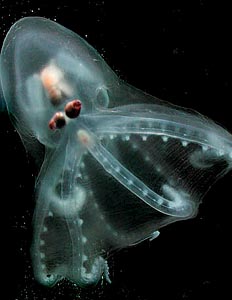
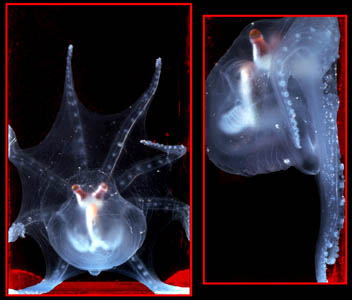
Figure.A. pelagicus photographed in ship-board aquaria off Hawaii. Left - Dorsal view of the same octopod as in the title photographs. Photograph by Steven Haddock. Center - Dorsoposterior view. Right - Side view. In latter two images, the octopod is crawling on the side of the aquarium (from Young et al., 1999).
Brief diagnosis:
An incirrate ...
- with tubular eyes.
- with funnel fused ventrally to mantle.
Characteristics
- Arms
- Arm suckers in single series proximally, double series distally (see below).
- Right arm III of male hectoctoylized.
- Head
- Eyes tubular in shape.
- Beaks: Descriptions can be found here: Lower beak; upper beak.
- Eyes tubular in shape.
- Funnel
- Funnel fused to mantle ventrally; mantle opening reduced to broad pores lateral to funnel.
- Viscera
- Stomach lies dorsal to digestive gland.
- Radula is ctenoglossan.
- Shell
- Shell (stylets) absent.
- Shell (stylets) absent.
Comments
More information on the anatomy/behavior of A. pelagicus can be found here.
The arm suckers are more closely spaced near the arm tips and appear to be arranged in two series.
Nomenclature
Idioctopus gracilipes Taki, 1962 is probably a synonym (see Hochberg, et al., 1992).A list of all nominal genera and species in the Amphitretinae can be found here. The list includes the current status and type species of all genera, and the current status, type repository and type locality of all species and all pertinent references.
Life History
The only illustration of a young A. pelagicus is the following drawing from Allan (1945, via Hochberg et al., 1992).Species
The family was thought to have only a single species until O'Shea (1999) demonstrated that two species occurred off New Zealand, although Nesis (1982/87) recognized two subspecies.
The species are separated most clearly by the structure of the hectocotylus: In A. pelagicus the ligula lacks suckers but has two series of papillae and the sucker count is 27-28. In A. thielei the ligula lacks both suckers and papillae, and the sucker count is 21-24. In addition, A. pelagicus has 10 lamellae in the outer demibranch of the gill and non-hectocotylized arms that each bear 22-32 (generally below 30) suckers, while A. thielei has 8 outer gill lamellae and non-hectocotylized arms with 24-41 (generally above 30) suckers.
Distribution
The distribution of A. pelagicus probably includes the tropical and subtropical waters of the world's oceans. Off New Zealand, A. pelagicus is found in subtropical waters while A. thielei is found further south in temperate waters (O'Shea, 1999).
References
Hochberg, F. G., M. Nixon and R. B. Toll. 1992. Order Octopoda Leach, 1818. In: Sweeney, M. J., C. F. E. Roper, K. M. Mangold, M. R. Clarke and S. v. Boletzky (eds.) "Larval" and juvenile cephalopods: A manual for their identification. Smithson. Contr. Zool., 513:1-282.
Nesis, K. N. 1982. Abridged key to the cephalopod mollusks of the world's ocean. 385+ii pp. Light and Food Industry Publishing House, Moscow. (In Russian.). Translated into English by B. S. Levitov, ed. by L. A. Burgess (1987), Cephalopods of the world. T. F. H. Publications, Neptune City, NJ, 351pp.
O'Shea, Steve. 1999. The Marine Fauna of New Zealand: Octopoda (Mollusca: Cephalopoda). NIWA Biodiversity Memoir 112: 280pp.
Thore, S. 1949. Investigations on the "Dana" Octopoda. Dana-Report No. 33, 85pp.
Voight, J. R. 1997 -- Cladistic analysis of the octopods based on anatomical characters. J. Moll. Stud., 63: 311-325.
Young, R. E., M. Vecchione and D. Donovan. 1999. The evolution of coleoid cephalopods and their present biodiversity and ecology. South African Jour. Mar. Sci. 20: 393-420.
Title Illustrations

| Scientific Name | Amphitretidae |
|---|---|
| Location | Hawaiian waters at 22.43°N, 157.97°W |
| Comments | In situ photographs of a male A. pelagicus taken at a depth of 830 m. Left - Orientation of octopod when first seen by the ROV (eyes directed upward, arms curled inward). Middle - Side view with arms extended. Right - Oral view with arms extended. Note hectocotylized right arm III. |
| Acknowledgements | Image courtesy of the Monterey Bay Aquarium Research Institute (MBARI). You must obtain permission from MBARI to use this photo; please contact pressroom@mbari.org for further information. |
| Specimen Condition | Live Specimen |
| Identified By | R. E. Young |
| Sex | Male |
| Copyright | © 2013 MBARI |
About This Page
Richard E. Young

University of Hawaii, Honolulu, HI, USA
Katharina M. Mangold (1922-2003)

Laboratoire Arago, Banyuls-Sur-Mer, France
Michael Vecchione

National Museum of Natural History, Washington, D. C. , USA
Page copyright © 2019 Richard E. Young , Katharina M. Mangold (1922-2003), and Michael Vecchione
 Page: Tree of Life
Amphitretinae . Amphitretus .
Authored by
Richard E. Young, Katharina M. Mangold (1922-2003), and Michael Vecchione.
The TEXT of this page is licensed under the
Creative Commons Attribution-NonCommercial License - Version 3.0. Note that images and other media
featured on this page are each governed by their own license, and they may or may not be available
for reuse. Click on an image or a media link to access the media data window, which provides the
relevant licensing information. For the general terms and conditions of ToL material reuse and
redistribution, please see the Tree of Life Copyright
Policies.
Page: Tree of Life
Amphitretinae . Amphitretus .
Authored by
Richard E. Young, Katharina M. Mangold (1922-2003), and Michael Vecchione.
The TEXT of this page is licensed under the
Creative Commons Attribution-NonCommercial License - Version 3.0. Note that images and other media
featured on this page are each governed by their own license, and they may or may not be available
for reuse. Click on an image or a media link to access the media data window, which provides the
relevant licensing information. For the general terms and conditions of ToL material reuse and
redistribution, please see the Tree of Life Copyright
Policies.
- Content changed 26 March 2019
Citing this page:
Young, Richard E., Katharina M. Mangold (1922-2003), and Michael Vecchione. 2019. Amphitretinae . Amphitretus . Version 26 March 2019 (under construction). http://tolweb.org/Amphitretus/20191/2019.03.26 in The Tree of Life Web Project, http://tolweb.org/




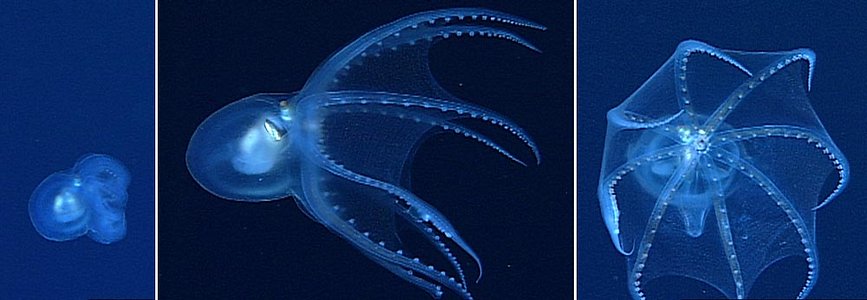
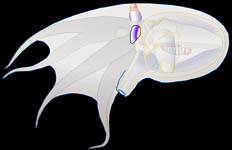

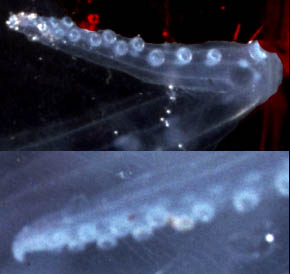
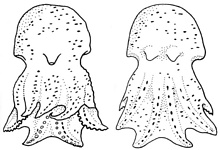
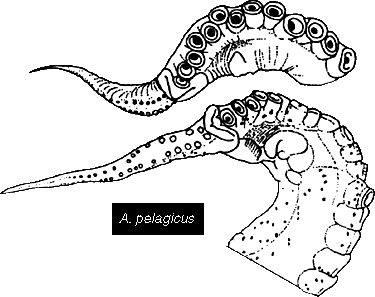
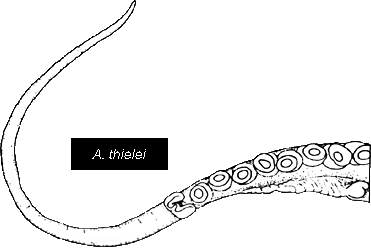



 Go to quick links
Go to quick search
Go to navigation for this section of the ToL site
Go to detailed links for the ToL site
Go to quick links
Go to quick search
Go to navigation for this section of the ToL site
Go to detailed links for the ToL site